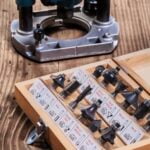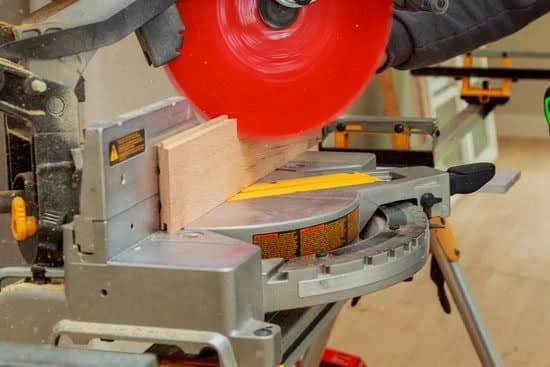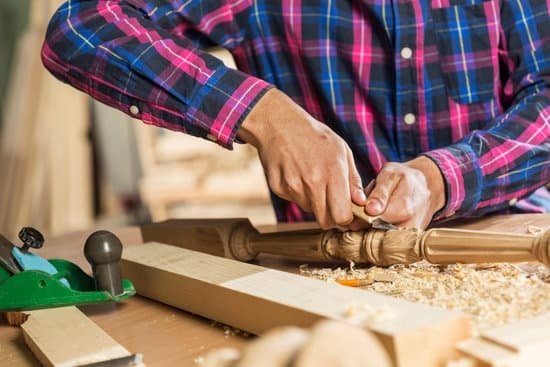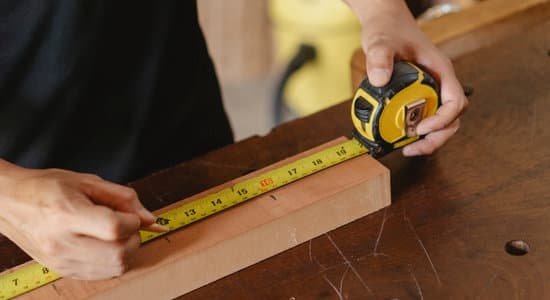Precision is paramount in woodworking, as even the slightest deviation can lead to imperfect creations. Understanding how to use a woodworking protractor is crucial in achieving accurate angles, which is essential for ensuring the quality of your projects. A woodworking protractor serves as a valuable tool that aids in measuring and marking precise angles with ease and efficiency.
When it comes to woodworking, accuracy is key in creating seamless joints and flawless designs. A woodworking protractor plays a significant role in helping woodworkers achieve the desired precision by providing a reliable means of measuring angles. By mastering the use of this tool, craftsmen can elevate their skills and produce high-quality pieces that reflect meticulous attention to detail.
In this article, we will delve into the basics of using a woodworking protractor, starting from understanding its definition, types, and common features. We will also explore how to select the right woodworking protractor for your specific project needs, guiding you through considerations and recommendations to make an informed choice.
By familiarizing yourself with the parts of a woodworking protractor and following our step-by-step guide on measuring angles accurately, you’ll be well-equipped to take your woodworking skills to the next level.
Understanding the Basics of a Woodworking Protractor
Woodworking protractors are essential tools for achieving precise angles in woodworking projects. Understanding the basics of a woodworking protractor is crucial to making accurate cuts and joints. A woodworking protractor, also known as an angle finder, is a measuring instrument used to determine and mark angles for cutting, shaping, or joining wood. There are various types of woodworking protractors available, including digital protractors, bevel protractors, simple angle finders, and combination squares with built-in protractors.
One common feature of woodworking protractors is the scale, which allows woodworkers to read the measurement of an angle accurately. The arms of a woodworking protractor extend from the center point where angles are measured.
Some protractors come with a locking mechanism that helps secure the arms in place once the desired angle is achieved. The zero point on a woodworking protractor serves as a reference point for measuring angles by aligning it with one edge of the material being worked on.
Using a woodworking protractor properly involves understanding how to read measurements and make adjustments for accurate results. To measure an angle using a woodworking protractor, place the center point at the vertex of the angle and align one arm with one side of the angle. Then, pivot the other arm until it lines up with the other side of the angle.
Read the measurement where the second arm intersects with the scale to determine the angle accurately. Practice using different types of woodworking protractors to familiarize yourself with their specific features and ensure precise measurements in your projects.
| Woodworking Protractor Basics | Details |
|---|---|
| Types | Digital Protractors, Bevel Protractors, Simple Angle Finders |
| Common Feature | The Scale for Accurate Angle Measurement |
| Usage Tip | Align Zero Point at One Edge for Reference |
Selecting the Right Woodworking Protractor for Your Project
When it comes to woodworking, precision is key in ensuring that pieces fit together seamlessly and projects turn out as envisioned. One essential tool that can help achieve accurate angles in woodworking is a protractor. A woodworking protractor is designed to measure and mark angles, making it a valuable instrument for any woodworker. In this section, we will delve into the importance of selecting the right woodworking protractor for your project, considering various factors to ensure optimal results.
Considerations for Choosing the Right Woodworking Protractor
There are several factors to take into account when selecting a woodworking protractor for your project. Firstly, consider the type of angles you will be working with most frequently – whether you need a basic protractor for simple angle measurements or a more specialized one for complex angles.
Additionally, think about the size and scale of the protractor – larger scales may provide more accuracy for certain projects. Another crucial factor to consider is durability and material – opting for a high-quality material ensures longevity and accuracy in measurements.
Recommendations for Woodworking Protractors
For beginners or those looking for a versatile option, a digital woodworking protractor with easy-to-read measurements may be ideal. These modern tools often offer precise measurements and additional features such as memory functions. For advanced woodworkers or those working on intricate projects, an adjustable bevel protractor may be more suitable, allowing for precise angle settings at any desired measurement. It’s also worth considering magnetic base options that provide stability when measuring angles on metal surfaces.
Selecting the right woodworking protractor can significantly impact the accuracy and efficiency of your woodworking projects. By carefully considering your specific needs and choosing a protractor that aligns with them, you can enhance your precision and ultimately improve the overall quality of your work. Stay tuned as we explore how to use a woodworking protractor effectively in the following sections to maximize its potential in your woodworking endeavors.
Familiarizing Yourself With the Parts of a Woodworking Protractor
A woodworking protractor is an essential tool for any woodworker looking to achieve precise angles in their projects. Before delving into how to use a woodworking protractor effectively, it is crucial to understand the basic components of this tool. Familiarizing yourself with the parts of a woodworking protractor will not only help you use it correctly but also ensure accurate measurements.
Here are the key parts of a woodworking protractor that you need to identify before using it:
- Scale: The scale on a woodworking protractor typically ranges from 0 to 180 degrees, allowing you to measure both acute and obtuse angles.
- Arms: These are the two movable parts of the protractor that can be adjusted to set the desired angle. One arm usually has a pointed end for precision placement.
- Locking Mechanism: Some woodworking protractors come equipped with a locking mechanism to secure the arms in place once you have set the angle.
- Zero Point: The zero point on a woodworking protractor marks the starting position from which angles are measured. It serves as a reference point for accurate measurements.
Identifying these components on your woodworking protractor is the first step towards mastering how to use it effectively for your woodworking projects.
Now that you have familiarized yourself with the parts of a woodworking protractor, you are ready to put this knowledge into practice. In the next section, we will provide you with a step-by-step guide on how to use a woodworking protractor for measuring angles accurately. By following these instructions and understanding the functions of each component, you will be able to achieve precise and consistent results in your woodworking endeavors.
Step-by-Step Guide on How to Use a Woodworking Protractor for Measuring Angles Accurately
Woodworking protractors are essential tools for ensuring precise angles in woodworking projects. Whether you are a beginner or an experienced woodworker, understanding how to use a woodworking protractor correctly can make a significant difference in the quality of your work. In this section, we will provide a step-by-step guide on how to use a woodworking protractor for measuring angles accurately.
1. Prepare Your Workspace: Before using a woodworking protractor, make sure your workspace is clear of clutter and debris. This will ensure that you can comfortably and accurately measure angles without any obstructions.
2. Identify the Parts of the Protractor: Familiarize yourself with the different parts of the woodworking protractor, including the scale, arms, locking mechanism, and zero point. Understanding these components will help you use the protractor effectively.
3. Align the Protractor: Place the base of the protractor against one edge of the angle you want to measure. Ensure that the center point of the protractor aligns with the vertex of the angle. This step is crucial for accurate angle measurement.
4. Read the Measurement: Look at where one arm of the angle intersects with the scale on the protractor to determine the angle measurement. Take note of whether you are using degrees or radians depending on your project requirements.
| Steps | Description |
|---|---|
| Prepare Your Workspace | Clear clutter and debris from your workspace before using a woodworking protractor. |
| Identify the Parts of Protractor | Familiarize yourself with scale, arms, locking mechanism & zero point. |
| Align The Protractor | Place base of protractor against edge & align center point with vertex. |
By following these steps and practicing using a woodworking protractor regularly, you can improve your accuracy in measuring angles for various woodworking projects. Remember that precision is key in woodworking, and mastering the skill of using a woodworking protractor will elevate your craftsmanship to new levels. Experiment with different angles and techniques to become more comfortable and proficient in utilizing this essential tool effectively in your woodworking endeavors.
Tips and Tricks for Using a Woodworking Protractor Effectively
Woodworking enthusiasts understand the importance of precision when it comes to crafting their projects. A woodworking protractor is a valuable tool that can help achieve accurate angles, ensuring that each cut and joint is done with utmost precision. Knowing how to use a woodworking protractor properly can make a significant difference in the quality of your work.
Common Mistakes to Avoid
One common mistake when using a woodworking protractor is not locking the arms securely in place before taking measurements. This can result in inaccurate readings and ultimately affect the outcome of your project. Make sure to double-check that the arms are tightened properly to prevent any movement during measurement.
Another mistake to avoid is misaligning the zero point of the protractor with the starting point on your workpiece. This can lead to errors in angle measurement and result in misaligned cuts. Always ensure that the zero point of the protractor is correctly lined up with the beginning of where you want to measure the angle.
Ensuring Precise Results
To ensure precise results when using a woodworking protractor, it’s essential to have good lighting and clear visibility of both the scale and workpiece. Proper lighting can help you accurately align the protractor and read measurements without any difficulty. Additionally, using a magnifying glass can be helpful for reading small increments on the scale with greater accuracy.
Practicing consistency in your technique is also crucial for achieving precise results when using a woodworking protractor. Develop a steady hand when marking angles and take your time to ensure that all measurements are done meticulously. With practice, you’ll become more adept at using the woodworking protractor effectively and producing high-quality woodworking projects.
Advanced Techniques for Using a Woodworking Protractor
A woodworking protractor is a versatile tool that can assist woodworkers in measuring a wide range of angles accurately. While basic angle measurements are essential in woodworking, there are times when you may encounter non-standard angles or compound angles that require more advanced techniques to measure. Understanding how to use a woodworking protractor for these situations can help elevate your woodworking projects to the next level.
To measure non-standard angles effectively, follow these steps with your woodworking protractor:
- Identify the vertex of the angle where the two lines meet.
- Align one arm of the protractor with one of the lines extending from the vertex.
- Read the measurement on the scale where the second line intersects with the protractor.
When measuring compound angles with a woodworking protractor, consider using a combination of different methods depending on the complexity of the angle:
- For simple compound angles, measure each individual angle separately and then add or subtract them to get the total measurement.
- For more complex compound angles, utilize additional tools such as bevel gauges or digital angle finders to ensure accurate measurements.
By mastering these advanced techniques for using a woodworking protractor, you can tackle intricate woodworking projects with confidence and precision. Remember that practice makes perfect, so don’t hesitate to experiment with different angles and methods to expand your skills as a woodworker. With dedication and attention to detail, you’ll soon become proficient in measuring both standard and non-standard angles effectively in your woodworking projects.
Conclusion
In conclusion, mastering the art of using a woodworking protractor is essential for any woodworker looking to achieve precise angles in their projects. By understanding the basics of a protractor, selecting the right one for the job, and familiarizing oneself with its various parts, woodworkers can ensure accurate measurements and angles every time.
Following a step-by-step guide on how to use a woodworking protractor is crucial in achieving accurate results. Knowing how to identify the scale, arms, locking mechanism, and zero point will help woodworkers make the most out of this tool. Additionally, implementing tips and tricks for using a woodworking protractor effectively can help avoid common mistakes and ensure precise measurements in their woodworking projects.
To further improve woodworking skills, practicing advanced techniques with a woodworking protractor is recommended. This includes measuring non-standard angles, compound angles, and more. Overall, consistent practice and utilizing the knowledge gained from using a woodworking protractor will ultimately lead to improved precision and quality in your woodworking projects. Keep practicing and honing your skills with this invaluable tool to become a master craftsman in no time.
Frequently Asked Questions
How Do You Use a Protractor for Beginners?
When using a protractor for beginners, the first step is to place the center hole of the protractor on the vertex of the angle you want to measure. Then, align one side of the angle with the zero line and read the measurement where the other side crosses.
How Do You Use a Workshop Protractor?
A workshop protractor is used in woodworking and metalworking to measure and mark angles accurately. To use it, place it against the workpiece edge, adjust it to the desired angle, and then lock it in place. This ensures precision in cutting or joining materials.
How Do You Use a Woodworking Angle Finder?
A woodworking angle finder is a useful tool for determining angles when cutting joints or making precise measurements in woodworking projects. To use it, you simply place it against the material’s edge or corner to obtain an accurate reading of the angle, which helps achieve precision in your woodworking tasks.

Hi everyone! I’m a woodworker and blogger, and this is my woodworking blog. In my blog, I share tips and tricks for woodworkers of all skill levels, as well as project ideas that you can try yourself.





